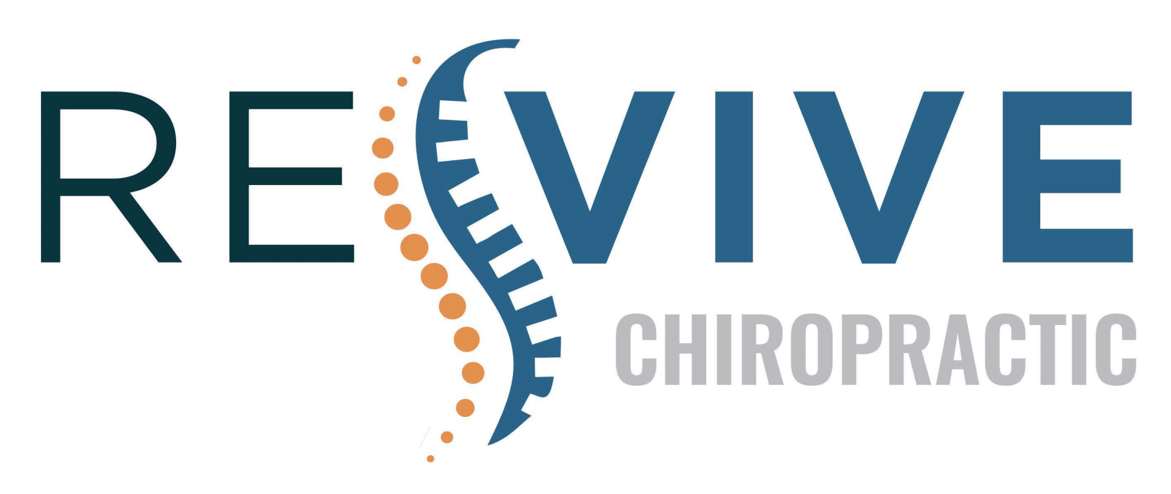If you're looking to enhance your flexibility, chiropractic care might be the key you've been searching for. By addressing misaligned joints and optimizing your spine's function, you'll find that your range of motion can improve considerably. This approach not only helps prevent injuries but also supports a more active lifestyle. Imagine a personalized care plan that integrates therapeutic exercises tailored just for you. But what specific techniques can truly make a difference? Let's explore the transformative potential of chiropractic adjustments and how they can redefine your physical capabilities.
Understanding Flexibility and Its Importance
Flexibility plays an important role in your overall physical health and daily activities. It's not just about being able to touch your toes or perform an impressive split; flexibility influences how well you move and function in your everyday life. When your muscles and joints are flexible, you can perform tasks with greater ease and reduced risk of injury.
Stretching and maintaining flexibility enhance your range of motion, which is essential for athletic performance and daily movements, like bending, reaching, or lifting. Incorporating flexibility training into your routine can improve circulation, reduce muscle tension, and promote relaxation. When you're more flexible, your body can absorb shock better, which is critical for preventing injuries during physical activities.
Whether you're an athlete or someone who enjoys casual exercise, flexibility helps you maintain ideal performance levels. Moreover, flexibility is closely tied to posture and spinal health. Poor flexibility can lead to imbalances that may cause discomfort or pain over time.
By improving your flexibility, you're not only enhancing your physical abilities but also supporting your spine and overall well-being. It's important to prioritize flexibility as part of your fitness regimen. Regular stretching, yoga, or other flexibility-focused exercises can make a significant difference in how you feel and move.
How Chiropractic Adjustments Work
Chiropractic adjustments play a significant role in enhancing your overall flexibility and movement. When your spine and joints are misaligned, it can lead to restricted motion and discomfort. Chiropractors use specific techniques to realign these structures, helping to restore proper function. During an adjustment, you'll often feel a quick thrust applied to a joint, which releases gas bubbles in the synovial fluid, creating that satisfying pop. This process doesn't just relieve tension; it also re-establishes the normal range of motion in your joints.
As your chiropractor evaluates your posture and movement patterns, they identify areas of restriction. By focusing on these areas, adjustments can improve joint mobility, reduce muscle tightness, and promote better circulation. With improved alignment, your body can move more freely, allowing for deeper stretches and more fluid motion.
Additionally, adjustments help your nervous system function more effectively. When your spine is aligned, nerve pathways can communicate without interference, contributing to a better connection between your brain and body. This can enhance your body's ability to respond to physical demands, making it easier to engage in stretching and strengthening exercises.
Incorporating chiropractic adjustments into your routine can set the stage for greater flexibility. Over time, you'll likely notice a significant improvement in how your body moves and reacts to various activities. With consistent care, you'll not only experience enhanced flexibility but also a more balanced, resilient body ready to tackle any challenge.
Benefits of Enhanced Flexibility
Many people underestimate the benefits of enhanced flexibility, but it plays an important role in overall health and well-being. Improving your flexibility can lead to a variety of positive changes in your life. Here are three key benefits you might experience:
- Injury Prevention: Enhanced flexibility allows your muscles and joints to move through a greater range of motion. This flexibility reduces the risk of strains and sprains during physical activities, helping you stay active and injury-free.
- Improved Posture: Tight muscles can lead to poor posture, which often results in discomfort or pain. By enhancing your flexibility, you're more likely to maintain proper alignment in your body. This can alleviate strain on your spine and surrounding muscles, contributing to better overall posture and comfort.
- Enhanced Performance: Whether you're an athlete or just enjoy recreational activities, flexibility can enhance your performance. Improved range of motion allows for more effective movement, leading to better results in sports, exercise, and daily activities. You'll find that you can execute movements with greater ease and efficiency.
Incorporating flexibility training into your routine is crucial for accessing these benefits.
By working on your flexibility through chiropractic care, you're not just investing in your physical capabilities; you're also promoting a healthier lifestyle.
Therapeutic Exercises for Flexibility
When it comes to improving flexibility, therapeutic exercises play a vital role.
You'll discover various stretching techniques that can enhance your range of motion and overall performance.
Regular practice not only aids in flexibility but also contributes to your overall well-being.
Stretching Techniques Explained
Stretching techniques play an essential role in enhancing flexibility and overall physical performance.
By incorporating effective stretches into your routine, you can improve your range of motion, reduce the risk of injury, and support your chiropractic care.
Here are three key stretching techniques you should consider:
1. Static Stretching: This involves holding a stretch in a comfortable position for 15-30 seconds.
It's best done after your workout to help relax the muscles and increase flexibility.
2. Dynamic Stretching: This type includes controlled movements that gently take you to the limits of your range of motion.
It's perfect for warming up before physical activity, as it prepares your muscles for action.
3. Proprioceptive Neuromuscular Facilitation (PNF): This advanced technique combines stretching and contracting of the targeted muscle group.
You'll typically need a partner for this one, making it highly effective in increasing flexibility.
Benefits of Regular Practice
Regular practice of therapeutic exercises designed for flexibility offers numerous benefits that extend beyond just improved range of motion. By committing to these exercises, you'll notice significant enhancements in your overall physical performance. Increased flexibility can lead to better posture, which reduces strain on your muscles and joints, ultimately preventing injuries.
Incorporating flexibility exercises into your routine helps reduce muscle tension and stiffness, making daily activities feel easier and more comfortable. You'll also find that improved flexibility enhances your balance and coordination, which is essential for athletic performance and can lower the risk of falls as you age.
Additionally, these exercises promote better circulation, ensuring that your muscles receive the oxygen and nutrients they need for recovery. You'll likely experience improved energy levels and a greater sense of well-being.
Consistency is key; the more regularly you practice these therapeutic exercises, the more profound the benefits will be. You'll not only feel better physically but also mentally, as the discipline of regular practice fosters resilience and determination.
Creating a Personalized Care Plan
To create an effective personalized care plan, you first need to assess your unique flexibility needs.
This assessment helps identify specific areas for improvement and sets the foundation for tailored treatment strategies.
Assessing Your Flexibility Needs
While many people overlook the importance of flexibility in their overall health, evaluating your individual needs is crucial for developing an effective chiropractic care plan.
Understanding your flexibility limitations can help you pinpoint specific areas for improvement and guarantee your treatment is tailored just for you.
Here are three key steps to assess your flexibility needs:
1. Self-Assessment: Take note of any areas where you feel tightness or discomfort. This could include your back, hips, or shoulders.
Keep a journal to track your range of motion over time.
2. Consultation: Schedule a consultation with your chiropractor.
They'll conduct a thorough evaluation, discussing your lifestyle factors, any injuries, and your fitness goals to create a clearer picture of your flexibility needs.
3. Goal Setting: Define specific flexibility goals.
Whether you want to improve your performance in sports or simply move with ease in daily life, having clear objectives will guide your chiropractic care.
Tailored Treatment Strategies
Creating a personalized care plan is essential for addressing your unique flexibility needs effectively. Every individual has different levels of flexibility, movement patterns, and physical goals. When you visit a chiropractor, they'll assess your current flexibility, identify any restrictions, and understand your lifestyle and activities.
Your tailored treatment strategy may include specific chiropractic adjustments to align your spine and joints properly. This alignment can enhance your range of motion and reduce discomfort. Additionally, your chiropractor might incorporate stretching exercises designed for your body type and flexibility goals. These exercises will help you improve your overall mobility and prevent injuries.
Nutrition and lifestyle modifications also play a role in your care plan. Your chiropractor can suggest dietary changes that support muscle recovery and overall health. They'll work with you to set realistic goals and track your progress, ensuring that your treatment remains effective and aligned with your needs.
Ultimately, a personalized care plan empowers you to take control of your flexibility journey. By addressing your unique requirements, you'll be on the path to improved mobility and a better quality of life.
Integrating Chiropractic With Other Therapies
Integrating chiropractic care with other therapies can markedly enhance your overall flexibility and wellness. By combining chiropractic adjustments with complementary treatments, you can address various aspects of your physical health more effectively.
Here's how you can create a holistic approach to improve your flexibility:
- Physical Therapy: Working with a physical therapist alongside your chiropractor can target specific muscle groups and movement patterns. This combination helps to strengthen areas that support your spine and joints, enhancing your flexibility and preventing future injuries.
- Massage Therapy: Incorporating massage therapy into your routine can relieve muscle tension and improve circulation. This not only complements your chiropractic adjustments but also allows your body to relax, making it easier to achieve greater flexibility during your sessions.
- Yoga or Pilates: Engaging in yoga or Pilates can further improve your flexibility while promoting body awareness. These practices focus on stretching and strengthening, which can aid in maintaining the adjustments made by your chiropractor.
They also encourage proper alignment and balance.
Success Stories and Testimonials
Over the past few years, many individuals have experienced remarkable transformations through chiropractic care, particularly in their flexibility. You might be surprised to hear how chiropractic adjustments can lead to significant improvements in your range of motion.
Take Sarah, for example. After just a few weeks of receiving regular chiropractic care, she regained the ability to touch her toes and participate in yoga classes that she once thought were impossible.
Then there's Mark, who struggled with tightness in his shoulders and back due to long hours at his desk. With targeted chiropractic treatments, he not only alleviated his pain but also improved his flexibility. He now enjoys activities like swimming and tennis without the restrictions he once faced.
Testimonials like these highlight a common theme: chiropractic care doesn't just relieve discomfort; it actively enhances your body's ability to move freely. Many clients rave about the personalized approach their chiropractors take, tailoring treatment plans to their specific needs and goals. You could be next to share your success story!
Imagine waking up each morning feeling limber and ready to tackle the day. Whether you're an athlete or someone looking to improve everyday mobility, chiropractic care can be the key to releasing your potential.
Conclusion
Incorporating chiropractic care into your routine can truly transform your flexibility and overall well-being. By realigning your spine and joints, you'll not only enhance your range of motion but also reduce the risk of injury. With personalized care plans and therapeutic exercises tailored just for you, you'll feel empowered to embrace a more active lifestyle. Don't wait any longer—take the first step toward improved flexibility and a healthier, more fulfilling life today!



